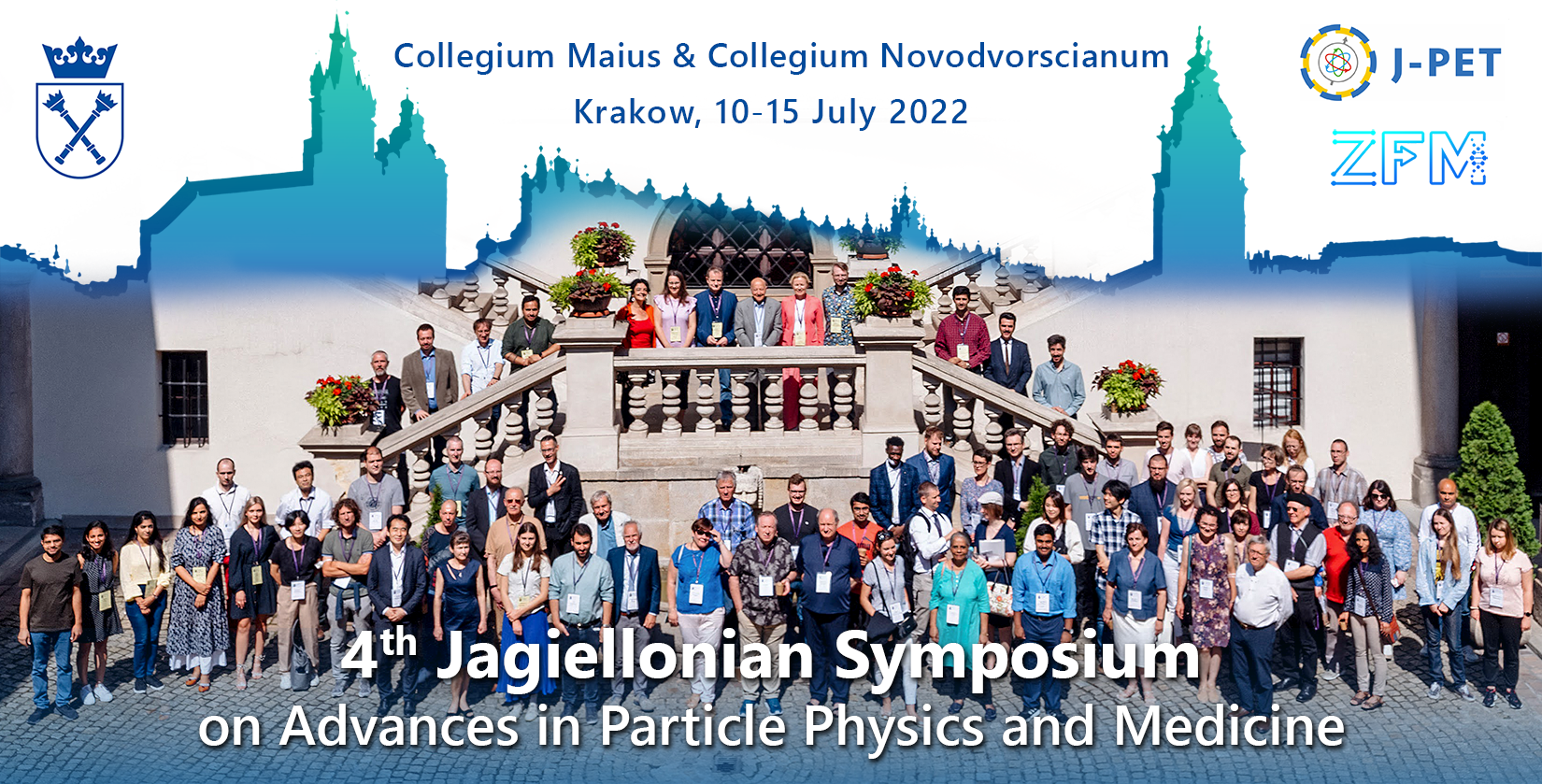Speaker
Description
Author: K. Dulski on behalf of the J-PET collaboration
Positronium imaging is a promising new technique that can enhance the diagnostic capabilities of Positron Emission Tomography (PET), based on a new structural index derived from ortho-positronium interaction with the environment in which it annihilates [1,2]. A positronium (Ps) can be formed during a standard PET scan when a positron emitted from a radiopharmaceutical administered to a patient forms a bound state with the electron. Depending on the total spin number S, the positronium can be formed in one of two states - para-Ps (p-Ps, S = 0) and ortho-Ps (o-Ps, S = 1). These two states differ mainly in the average lifetime (in vacuum: 0.125 ns for p-Ps and 142 ns for o-Ps) and the number of photons that are emitted during the annihilation (p-Ps even, o-Ps odd number of photons). In particular, the lifetime of o-Ps may be shortened when interacting with the environment in which it is formed. Therefore, by simultaneously reconstruction of the position of o-Ps annihilation and its average lifetime, it becomes possible to characterize the structure of a given part of the sample in space, which is the basis for positronium imaging [1]. Currently, the J-PET detector [1-3] is the only detector that is able to obtain positronium images. The positronium images of the two phantoms measured by the 192-strip J-PET detector will be shown [1,4]. Additionally, data on the sensitivity and purity of two- and three-photon positronium imaging will be presented on the basis of simulation data [4].
[1] P. Moskal, K. Dulski, N. Chug et al., Positronium imaging with the novel multiphoton PET scanner, Science Advances 7 (2021) eabh4394
[2] P. Moskal and E.Ł. Stępień, Positronium as a biomarker of hypoxia, Bio-Aglorithms and Med-Systems 17 (2021) 311-319
[3] P. Moskal, S. Niedźwiecki, T. Bednarski et al., Test of a single module of the J-PET scanner based on plastic scintillators. Nucl. Instr. and Meth. A 764, 317-321 (2014)
[4] K. Dulski, PhD Thesis: Development of positronium imaging with the 192-strip J-PET detector (2022)

